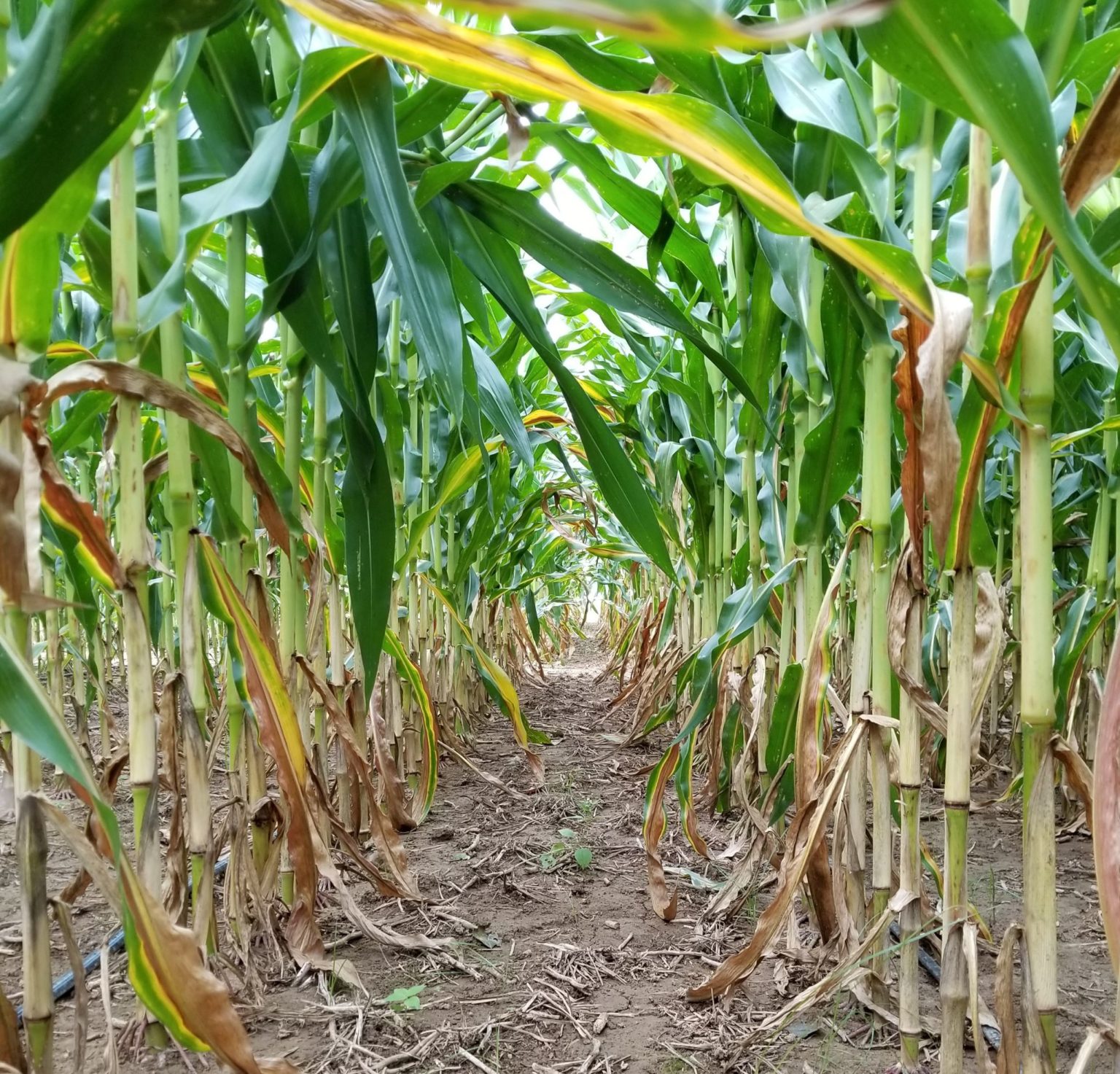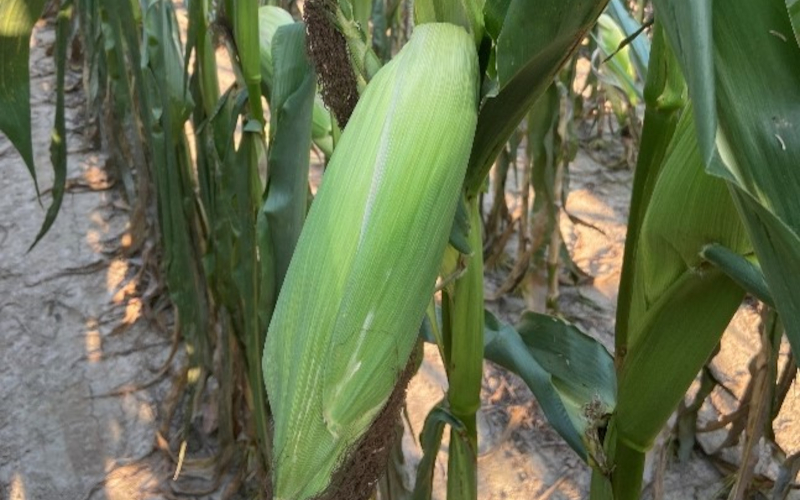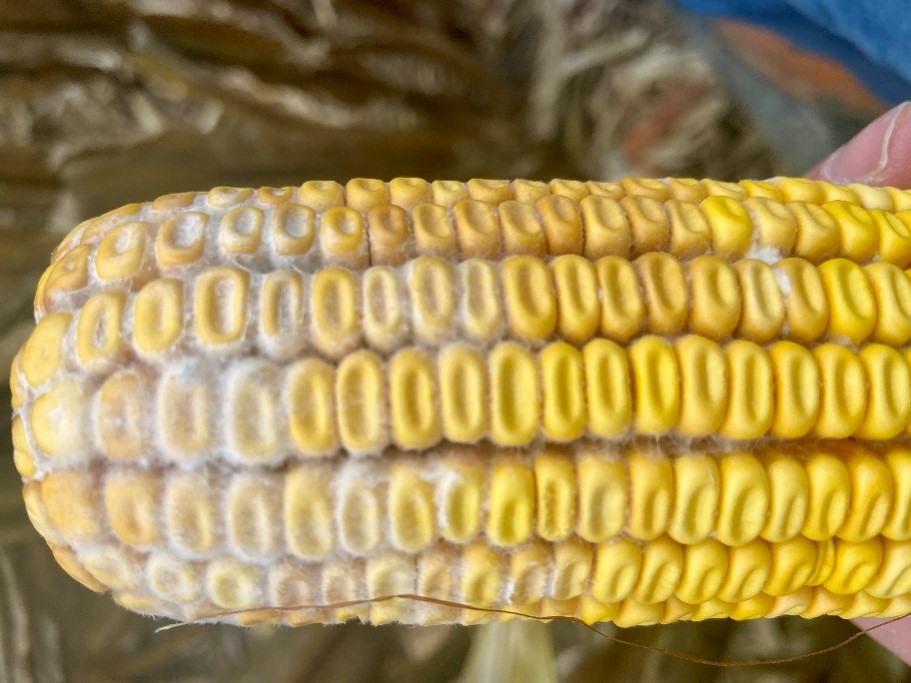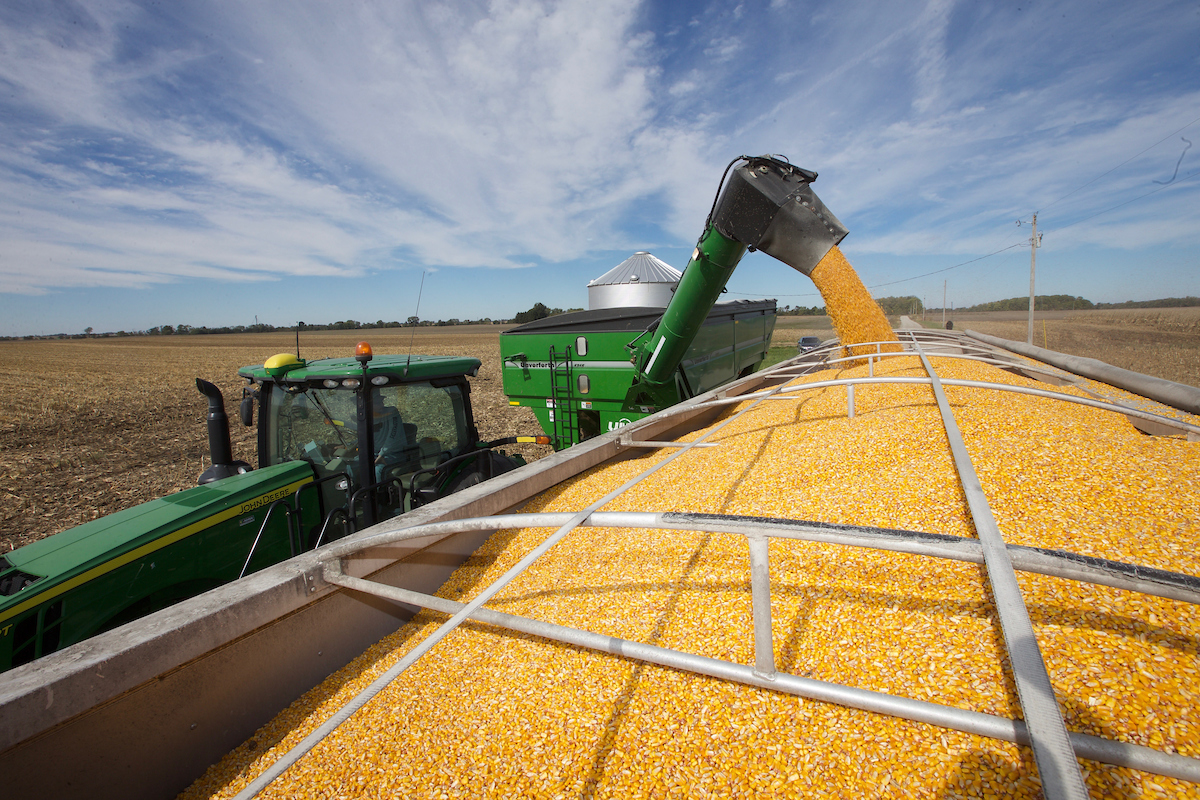Many locations in Indiana recently experienced rainfall totals in excess of 5 inches in a relatively short period of time. The heavy rainfall has resulted in significant water movement through the soil profile, saturated soils, and some significant flooding and ponding in certain areas. Since the majority of farmers across the state have completed their nitrogen fertilizer applications prior to the heavy rainfall, the question that is often asked is how much nitrogen did I lose? Determining the total amount of nitrogen that was lost and if and what amount of supplemental nitrogen is needed to help preserve corn yield is often a difficult question to answer because of the multiple factors that influence this decision. Factors that influence the amount of nitrogen lost include: 1) the timing, placement, rate and source of nitrogen fertilizer applied, 2) the amount of nitrate-nitrogen in the soil at the time of excess rainfall which also depends on time, temperature, moisture, and soil properties, 3) the use of a nitrification inhibitor which can delay conversion of ammonium to nitrate, 4) the duration of saturated soil conditions, and 5) the growth stage of the corn plant and the amount of nitrogen the plant has already taken up.
The two main mechanisms for nitrogen loss following heavy rainfall and flooding is from leaching of soil nitrate below the rooting zone and denitrification. Nitrogen in the form of nitrate in the soil is negatively charged and has the ability to be physically moved or leach with soil drainage following significant rainfall events. This is typically common in more coarse-texture, or sandier soil types. In soils which are much fine-textured, poorly drained, and heavier, or low-lying areas of fields where ponding occurs, the most common cause of nitrogen loss is from denitrification. Denitrification occurs when soil nitrate is converted to nitrogen gas by soil bacteria as a result of the depletion of oxygen caused by saturated soil conditions. Two to three days of soil saturation is typically required for soil bacteria to begin the denitrification process (Lee et al., 2007).

Image 1: Canopy of corn exhibiting significant nitrogen deficiency.
Denitrification
For denitrification to occur, nitrogen must be in the nitrate form. Therefore, it is important to understand which source of nitrogen fertilizer was applied and when was it applied. At this point in the growing season (late June, early July), it can be assumed that late fall nitrogen applications and preplant nitrogen applications have been completely converted to nitrate. Table 1 illustrates the potential length of time that it takes various nitrogen fertilizer sources to convert to ammonium and nitrate. The rates of conversion are dependent on soil temperature and aeration (Nielsen, 2004). Therefore, the higher the soil temperature, the faster nitrogen is converted from ammonium to nitrate. The use of a nitrification inhibitor (e.g. nitrapyrin) can help delay the conversion of fertilizer nitrogen into the nitrate form. A nitrification inhibitor can potentially delay the conversion of ammonium to nitrate by 2 to 6 weeks depending on environmental conditions (Omonode and Vyn, 2013; Havlin et al., 2014). However, this conversion delay is likely closer to 2 weeks at this time in the growing season due to warmer soil temperatures. A urease inhibitor can extend the conversion of urea to nitrate by delaying the time period it takes for urea to hydrolyze to ammonium by 7 to 10 days.
Table 1. Approximate time until fertilizer nitrogen is in the nitrate form (Havlin et al., 1999)
| Fertilizer Source | Approximate Time Until Ammonium |
Approximate Time Until Nitrate |
| Ammonium Sulfate, 10-34-0, MAP, DAP | 0 weeks | 1 to 2 weeks |
| Anhydrous Ammonia | 3 to 8 weeks | |
| Urea | 2 to 4 days | 1.25 to 2.5 weeks |
| UAN | 50% from Urea in 2 to 4 days 25% is Ammonium, 0 weeks |
50% in 1.25 to 2 weeks 25% in 1 to 2 weeks 25% is nitrate, 0 weeks |
Soil temperature and the length of time the soil is saturated also influences the amount of nitrogen lost from denitrification. At soil temperatures between 55 to 65 degrees Fahrenheit, approximately 2 to 3% of soil nitrate is lost per day under saturated conditions. At soil temperature greater than 65 degrees Fahrenheit, approximately 4 to 5% of the soil nitrate is lost per day under saturated conditions. Also, it takes approximately 1 to 2 days for a saturated soil to reach anaerobic conditions. Therefore, if a sidedress application of 28% UAN was made 3 weeks ago at a rate of 150 lbs N/acre, then using Table 1 would suggest 100% of the UAN has been converted to nitrate since application. Thus, if the soil remained saturated for 6 days at a soil temperature greater than 65 degrees, then it would be expected that a total of 20% [5% per day X 4 days (subtracted 2 days for the lag time until a saturated soil reaches anaerobic conditions)] of the 150 lbs N/acre was denitrified or lost (approximately 30 lbs N/acre). It is also important to note that these calculations are strictly estimates and may not reflect actual N losses because so many factors affect conversion to nitrate and loss from the soil. In addition, corn that is submerged or ponded for 3 to 4 days may also experience significant physical damage which may limit the benefit of a supplemental nitrogen application.
Leaching
Similar to N loss from denitrification, determining the amount of N loss from leaching is also dependent on the amount of nitrogen fertilizer applied that is in the nitrate form (Laboski, 2016) (Table 1). Therefore, if 150 lbs of N/acre was applied as a sidedress application of UAN containing a nitrification inhibitor 1 week ago, then only 25% of the UAN is likely in the nitrate form, which means approximately 37.5 lbs N/acre has the potential to be leached following a heavy rainfall. Keep in mind that the crop has also taken up some nitrogen since the nitrogen fertilizer was applied so the potential N loss from leaching would be less than 37.5 lbs N/acre. Furthermore, nitrogen leaching is also dependent on soil drainage patterns and the total amount of water required of a soil to reach field capacity (White, 2018). Greater nitrogen loss from leaching is likely to occur on more coarse-textured, sandier soil types, compared to more fine-textured, loam and clay soil types. Established rooting depth is also important when understanding potential nitrogen loss from leaching. Just because nitrogen has downward in the soil profile, doesn’t mean the nitrogen has moved out of the root zone, especially during seasons where dry conditions occur early and rooting depth is increased.
Supplemental N Applications
The thought processes and calculations presented above can help guide farmers on the amount of nitrogen fertilizer required if a supplemental nitrogen fertilizer application is needed to maintain corn yield. Previous research has indicated that rescue applications of nitrogen fertilizer in the late vegetative growth stages can help preserve corn yield if nitrogen fertilizer is lost. If visual nitrogen stress is observed in corn prior to pollination, then a supplemental N fertilizer application will likely be needed. Furthermore, it is important to understand that flooding and ponding in fields is spatially highly variable. Therefore, supplemental nitrogen applications need to be determined as economical for the crop and may need to be applied spatially and at varying rates across the field to avoid over application and unnecessary compaction to otherwise healthy plants in the field where saturation may not have occurred (Nielsen, 2004).
References:
Havlin, J.L., J.D. Beaton, S.L. Tisdale, and W.L. Nelson. 1999. Soil Fertility and Fertilizers. An Introduction to Nutrient Management. 6th ed. Prentice Hall. Upper Saddle River, NJ.
Havlin, J.L., S.L. Tisdale, W.L. Nelson, and J.D. Beaton. 2014. Soil Fertility and Fertilizers. An Introduction to Nutrient Management. 8th ed. Prentice Hall. Upper Saddle River, NJ.
Laboski, C.A.M. 2016. Evaluating Nitrogen Loss after Heavy Rainfall. Proc. Of the 2016 Wisconsin Crop Management Conference. Vol. 55. https://extension.soils.wisc.edu/wp-content/uploads/sites/68/2014/02/WCMC-2016-Complete-Proceedings.pdf#page=59
Lee, C., J. Herbek, G. Schwab, and L. Murdock. 2007. Evaluating Flood Damage in Corn. AGR-193. University of Kentucky Cooperative Extension Service. http://www2.ca.uky.edu/agcomm/pubs/agr/agr193/agr193.pdf
Nielsen, R.L. 2004. Soggy Soils, N Loss, and Supplemental Nitrogen Fertilizer for Corn. Corny News Network. Purdue Extension. https://www.agry.purdue.edu/ext/corn/news/articles.04/NitrogenLoss-0602.html
Omondoe, R.A., and T.J. Vyn. 2013. Nitrification Kinetics and Nitrous Oxide Emissions when Nitrapyrin is Coapplied with Urea-Ammonium Nitrate. Agron. J. 105:1475-1486.
White, C. 2018. What is the Potential for Nitrogen Losses from Extreme Summer Rainfall. Penn State University Extension. https://extension.psu.edu/what-is-the-potential-for-nitrogen-losses-from-extreme-summer-rainfall





